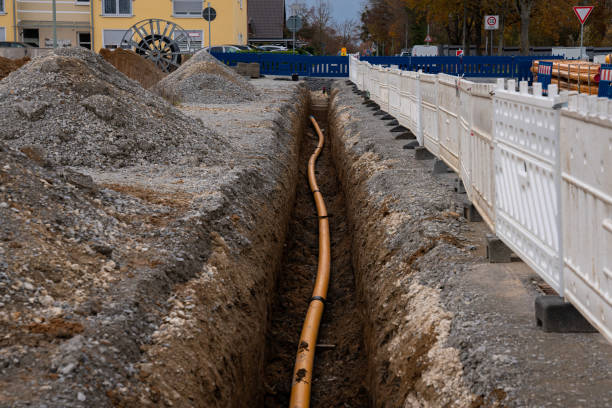Power cable monitoring solutions
Power cable joints, terminations, cable tunnels, and cable trenches.
Power cable joints, terminations, cable tunnels, and cable trenches.
During the transmission of electrical power, power cables can be affected by temperature, and high temperatures can lead to cable overload, insulation aging, and even faults. In order to monitor the temperature of power cables in a timely manner and ensure the safety and reliable operation of the power system, distributed fiber optic temperature sensing technology has emerged. This technology uses fiber optic sensors distributed along the length of the cable to monitor the temperature distribution of the cable in real time.

Cable joints and terminations: Install distributed fiber optic temperature sensing sensors at cable joints and terminations. The fiber optic sensors are in close contact with the cable to transmit temperature information, enabling real-time monitoring of temperature changes at the joints and terminations. When the temperature exceeds the preset threshold, timely alerts can be issued, and appropriate maintenance measures can be taken to prevent damage to the joints and terminations due to overheating.

Cable tunnels: Cable tunnels are an important part of cable laying and are areas where temperature changes can occur significantly. Install distributed fiber optic temperature sensing sensors inside the cable tunnels. The fiber optic sensors can be embedded or attached to the cables, allowing real-time monitoring of the temperature distribution of the cables within the tunnels. When temperature abnormalities occur, timely measures such as insulation, ventilation, and cooling can be taken to prevent cable overheating and potential faults.

Cable trenches: Cable trenches are another common location for cable installation and are susceptible to environmental influences. Install distributed fiber optic temperature sensing sensors inside the cable trenches. Place the fiber optic cables alongside the power cables in the trenches to obtain temperature information of the cables, enabling real-time monitoring of the cable temperature changes. When temperature abnormalities occur, timely measures such as drainage and cooling can be taken to prevent cable faults caused by external influences.
Distributed fiber optic temperature sensing technology can provide real-time temperature data for the operation of the power system, helping maintenance personnel to promptly detect temperature anomalies and take appropriate measures to ensure the safe operation of the power system. Additionally, this technology offers advantages such as flexible installation and strong resistance to interference, making it suitable for various complex power cable environments, thereby enhancing the safety and reliability of the power system.





